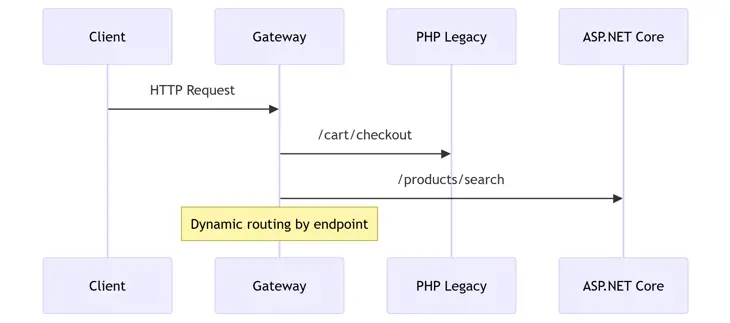This article provides a step by step process of migrating your enterprise php web applications to ASP.NET Core.
This article provides a step by step process of migrating your enterprise php web applications to ASP.NET Core.
The web application landscape is undergoing a tectonic shift. While PHP powers 78.9% of all websites with known server-side programming languages (W3Techs 2025), enterprise leaders are increasingly migrating mission-critical applications to ASP.NET Core. Consider these compelling data points:
At Facile Technolab, we've migrated over 17 million lines of PHP code to .NET ecosystems. This comprehensive guide reveals the strategic framework we use to help enterprises like yours achieve:
Legacy PHP applications often become:
PHP's flexibility becomes its Achilles' heel:
// Common vulnerability in PHP file handling
$file = $_GET['file'];
include('/templates/' . $file); // Path traversal riskASP.NET Core's built-in protections:
[HttpGet("template")]
public IActionResult GetTemplate(string file)
{
// Automatic path validation
if (!Path.GetFileName(file).Equals(file))
{
return BadRequest("Invalid file name");
}
return PhysicalFile(Path.Combine(_templatesPath, file), "text/html");
}| Capability | PHP (Laravel) | ASP.NET Core | Advantage |
|---|---|---|---|
| Request/sec | 850 | 2,100 | 147% ↑ |
| Cold start | 1.8s | 0.3s | 500% ↑ |
| Memory leak | 7.3% apps | 0.2% apps | 36x ↓ |
| Container size | 480MB | 110MB | 77% ↓ |

MCI = (Code Complexity × 0.3) + (Data Model × 0.4) + (Integrations × 0.3)
| Score | Migration Strategy | Timeline |
|---|---|---|
| < 35 | Big Bang | 3-5 months |
| 36-70 | Incremental | 6-9 months |
| > 70 | Strangler Pattern | 10-14 months |
# PHP Container (Legacy) FROM php:7.4-apache RUN docker-php-ext-install pdo_mysql COPY . /var/www/html # .NET Core Target FROM mcr.microsoft.com/dotnet/aspnet:8.0 AS runtime WORKDIR /app COPY /published ./ ENTRYPOINT ["dotnet", "MigratedApp.dll"]
MySQL to SQL Server Pattern Conversion
| PHP/MySQL | ASP.NET Core/SQL Server |
|---|---|
| mysqli_fetch_assoc() | Entity Framework Core: |
| context.Users.First() | |
| PDO::lastInsertId() | SaveChanges() returns ID |
| ON DUPLICATE KEY | MERGE statements |
Data Type Mapping Table
| MySQL | SQL Server | Precision Risk |
|---|---|---|
| TEXT | NVARCHAR(MAX) | None |
| DATETIME | DATETIME2 | 100ns vs 1s |
| DECIMAL(10,2) | DECIMAL(18,4) | Scale adjustment |
// PHP session_start(); $_SESSION['user'] = $user;
// ASP.NET Core
HttpContext.Session.SetString("User", JsonSerializer.Serialize(user));Authentication Systemsservices.AddStripe(options =>
{
options.PublishableKey = Configuration["Stripe:Key"];
options.WebhookSecret = Configuration["Stripe:Secret"];
});| Legacy Frontend | .NET Core Approach | Benefit |
|---|---|---|
| jQuery UI | Razor Components | 60% less JS |
| Smarty Templates | Razor Pages | Strong typing |
| Vanilla JS | Blazor WASM | C# in browser |
Progressive Migration Technique
<!-- PHP legacy page -->
<div id="product-section">
<?php include('product_card.php'); ?>
</div>
<!-- .NET Core replacement -->
<div id="product-section">
<vc:product-card product-id="123"></vc:product-card>
</div>Zero-Downtime Transition Architecture

Post-Migration Accelerators
Migrating from PHP to ASP.NET Core isn’t just a technical upgrade, it’s a strategic leap toward scalability, cross-platform agility, and cost efficiency. By migrating to ASP.NET Core and cloud-native tools, enterprises can modernize legacy communication layers into future-ready assets.
Facile Technolab is a specialized software application modernization company with 9 years of experience.
Enterprise Web Application Development Articles:
Articles related to Modernizing Enterprise Web Applications:
